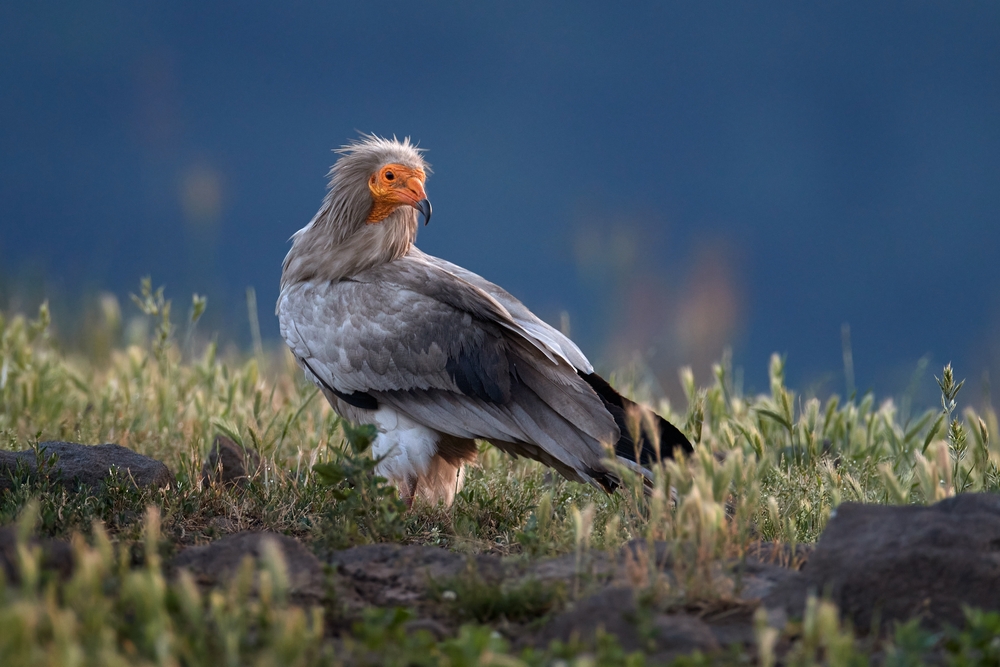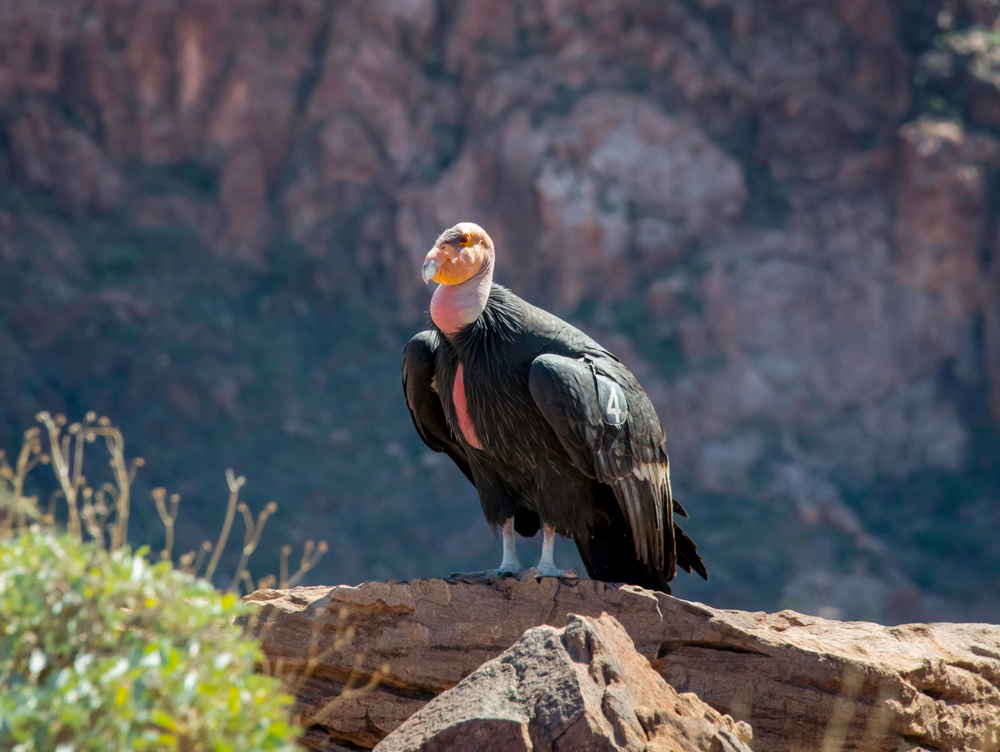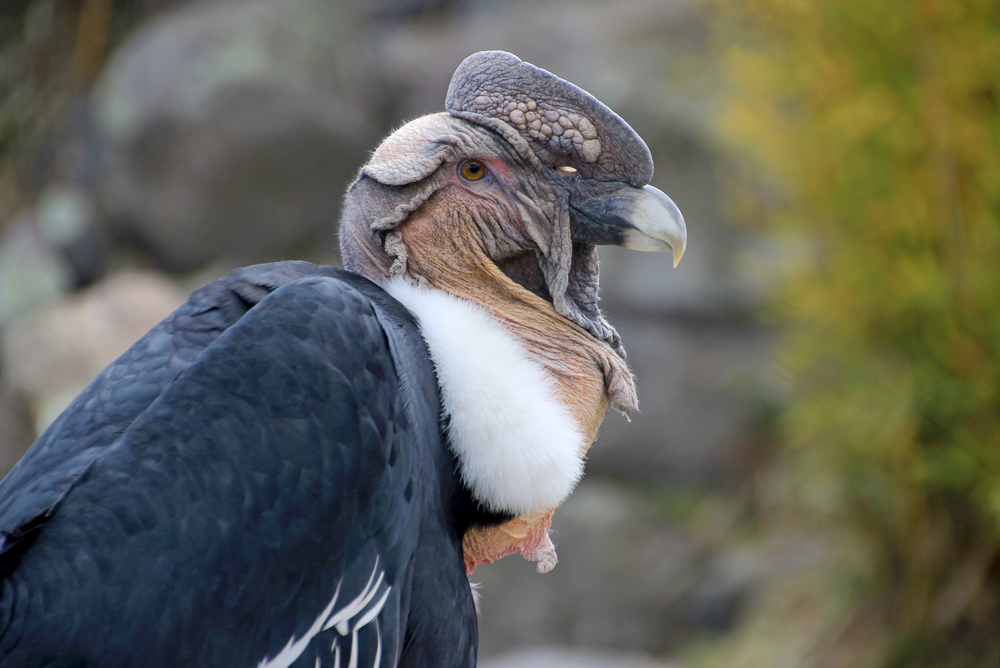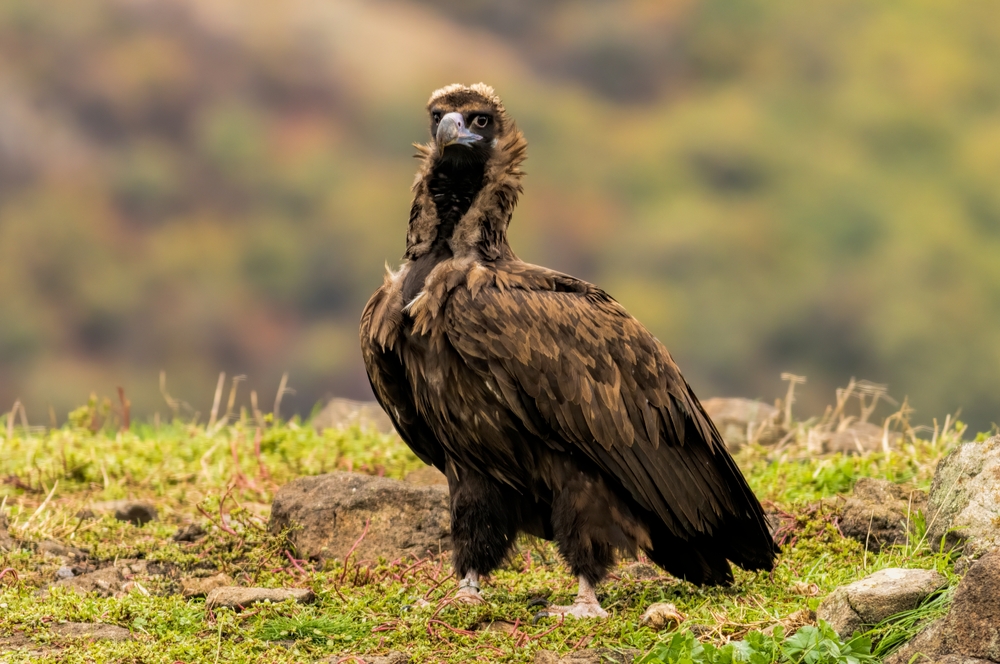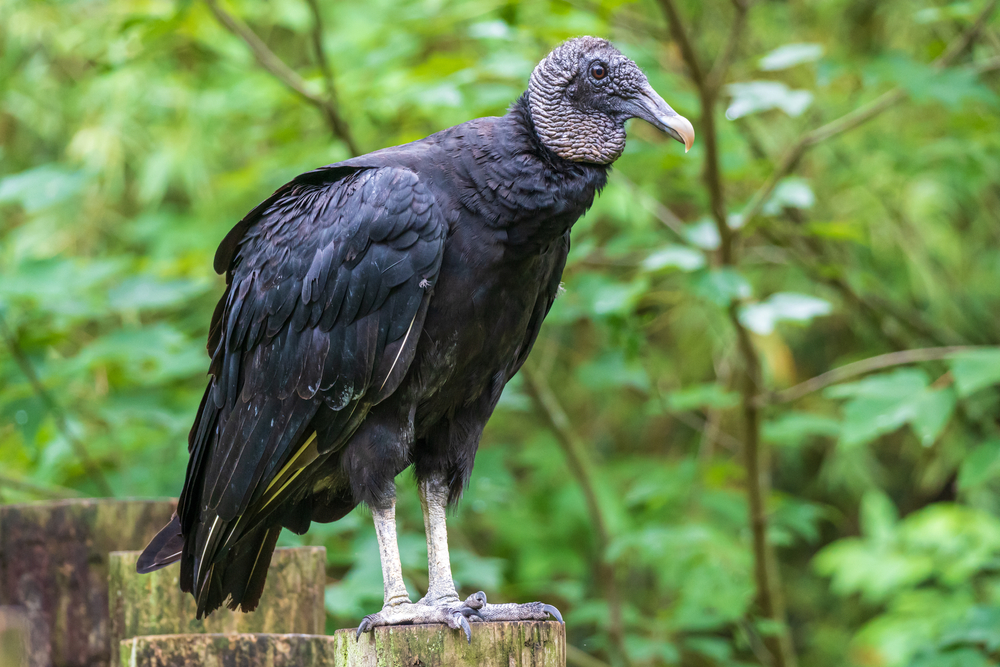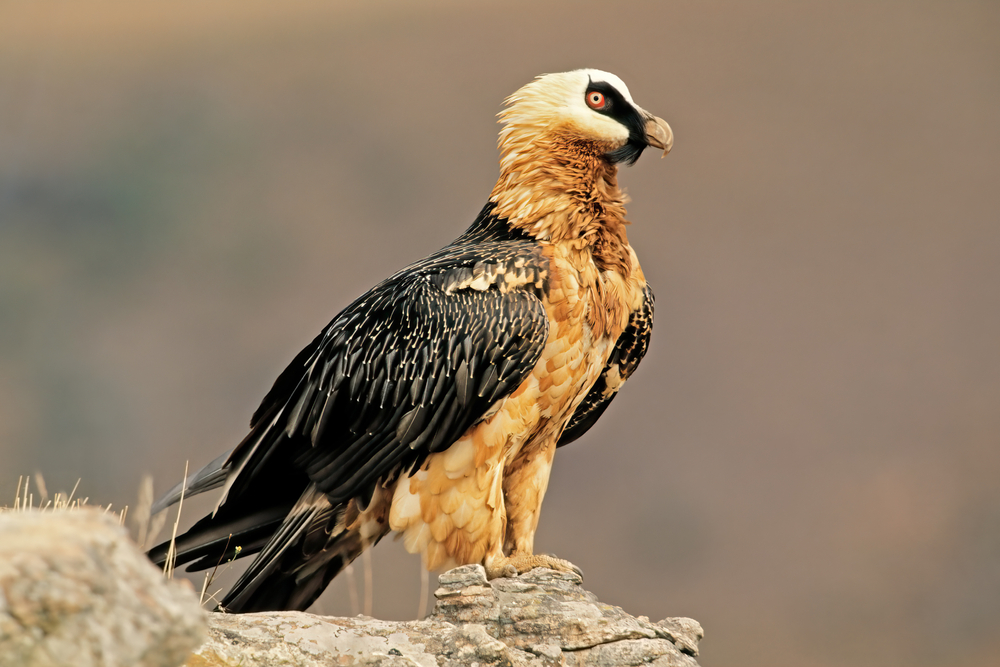The Egyptian Vulture (Neophron percnopterus) is most closely related to the Bearded Vulture (Gypaetus barbatus), with both belonging to the more ancient lineages of Old World vultures, distinct from Griffon and Cinereous vultures.
About
The Egyptian Vulture (Neophron percnopterus), a member of the Accipitridae family, is a small but highly intelligent Old World vulture found across southern Europe, Africa, and Asia. Distinguished by its adaptability and resourcefulness, this species has long fascinated humans and even earned a place in ancient Egyptian culture, where it was revered as a sacred bird and symbol of protection.
Smaller than most vultures, the Egyptian Vulture measures 47–65 cm (19–26 in) in length with a wingspan of 1.5–1.7 meters (4.9–5.6 ft). Adults are easily recognized by their contrasting white plumage with black flight feathers and a bare, bright yellow face. Juveniles, however, are darker brown and gradually lighten as they mature. Its slender bill and wedge-shaped tail set it apart from other scavengers.
This vulture is an opportunistic feeder, consuming carrion, small mammals, insects, and even the eggs of other birds. Remarkably, it is one of the few bird species known to use tools: Egyptian Vultures have been observed using stones to break open ostrich eggs, showcasing advanced problem-solving skills. Such intelligence underscores their adaptability in diverse habitats ranging from deserts to farmlands.
Breeding typically occurs on cliffs, caves, or rocky ledges. The female lays 1–3 eggs, with both parents sharing incubation and feeding responsibilities. Chicks fledge at about three months but remain dependent for several weeks afterward.
Despite its wide distribution, the Egyptian Vulture is currently listed as Endangered due to poisoning, habitat loss, reduced food availability, and collisions with power lines. Conservation programs across Europe, North Africa, and India aim to stabilize populations through habitat protection, captive breeding, and public awareness campaigns.
Graceful in flight and remarkable in behavior, the Egyptian Vulture remains one of the most iconic and resourceful scavengers in the bird world.
Physical Characteristics
The Egyptian Vulture (Neophron percnopterus) is one of the smallest Old World vultures, notable for its slender build, white plumage, and intelligent foraging behavior.
Plumage:
-
Adults: Mostly white to pale cream body with contrasting black flight feathers. Plumage often appears yellowish or orange-stained, as individuals dust-bathe in soils rich in iron oxides.
-
Juveniles: Dark brown overall with lighter mottling, gradually whitening over several years. Full adult plumage is reached around age 5–6.
Head and Face:
The head is bare, with wrinkled yellow skin, and the beak is slender, dark at the tip and yellow at the base. The elongated, narrow shape of the beak makes it unique among vultures, adapted for probing and tool use.
Body and Wings:
The body is small and slim compared to larger vultures. Wings are long and triangular, with broad bases tapering to pointed tips, giving them excellent soaring ability despite their smaller size.
Tail:
The tail is long and wedge-shaped, a key field mark that helps distinguish them in flight.
Size:
-
Length: 23–28 in (58–70 cm)
-
Wingspan: 5.2–5.6 ft (1.6–1.7 m)
-
Height at Rest: About 1.6–1.9 ft (50–60 cm)
Weight:
-
Adults: 4.4–5.5 lbs (2–2.5 kg)
The Egyptian Vulture’s contrasting black-and-white plumage, wedge-shaped tail, and bright yellow face make it unmistakable in flight. Its slender build and tool-using intelligence distinguish it as one of the most remarkable small vultures.
Reproduction
The Egyptian Vulture (Neophron percnopterus) follows a slow reproductive cycle typical of vultures, producing few chicks but investing heavily in their care.
1. Mating and Courtship:
Egyptian Vultures are monogamous and form long-term pair bonds. Courtship includes aerial displays, mutual soaring, and gift presentations of sticks or feathers.
2. Nesting Sites:
Nests are built on cliff ledges, rocky crags, caves, or occasionally abandoned buildings. Nests are large, made of sticks and lined with wool, rags, and softer materials.
3. Egg Laying:
The female lays 1–3 eggs per clutch, though 2 is most common, between March and May depending on the region. Eggs are whitish with reddish-brown blotches.
4. Incubation:
Incubation lasts 39–45 days, shared by both parents, though the female often incubates more frequently while the male provides food.
5. Hatching and Care of Chicks:
Chicks hatch covered in white down and are altricial. Both parents regurgitate food for them. In nests with two chicks, both often survive, unlike in larger vultures where only one usually fledges.
6. Fledging and Independence:
Young fledge at around 70–90 days of age but may remain dependent on their parents for several more weeks before dispersing.
7. Breeding Frequency:
Pairs usually breed once per year, with strong site fidelity, returning to the same nesting cliffs year after year.
The Egyptian Vulture’s relatively higher reproductive output (often raising two chicks) compared to other vultures helps balance its smaller size and wider-ranging migratory lifestyle.
Lifespan
The Egyptian Vulture (Neophron percnopterus) is a long-lived species for its size, reflecting its slow maturity and low reproductive rate.
Lifespan in the Wild:
In the wild, Egyptian Vultures typically live 20–25 years, with some individuals surviving up to 30 years under favorable conditions. However, many face threats such as poisoning, electrocution, and food scarcity.
Lifespan in Captivity:
With reliable food, veterinary care, and protection, they may live up to 35–40 years, longer than most small raptors.
Threats to the Egyptian Vulture:
-
Poisoning: Ingestion of poisoned carcasses intended for predators remains the leading cause of mortality.
-
Electrocution: Collisions with poorly designed power lines kill many vultures annually.
-
Hunting and Persecution: Targeted in some regions due to cultural beliefs or conflicts with humans.
-
Habitat and Food Loss: Declines in traditional livestock farming reduce carrion availability.
-
Migration Hazards: Long migratory journeys expose them to risks across multiple countries.
Despite their long potential lifespan, Egyptian Vultures are classified as Endangered, as adult survival is crucial to offset their slow reproduction.
Eating Habits
The Egyptian Vulture (Neophron percnopterus) is one of the most versatile feeders among vultures, with a varied diet and a reputation for using tools.
Diet:
-
Carrion: Primary food source, including livestock carcasses, wild ungulates, and smaller animal remains.
-
Eggs: Notably feeds on large bird eggs, such as ostrich eggs.
-
Small Prey: Will hunt small mammals, reptiles, insects, and nestlings when carrion is scarce.
-
Human-Related Food: Opportunistically feeds on garbage, food scraps, and organic waste near villages and towns.
Hunting Strategy:
-
Scavenging: Like other vultures, relies on keen eyesight to locate carrion.
-
Tool Use: Famous for using stones to break open ostrich eggs, one of the first documented cases of tool use in birds.
-
Insect Feeding: Frequently turns over dung to extract beetle larvae and other insects.
Feeding Behavior:
-
Equipped with a slender, narrow bill adapted for precision feeding, probing cracks and crevices other vultures cannot access.
-
Often arrives at carcasses after larger vultures, feeding on scraps and smaller pieces.
-
Will forage both alone and in small groups, but rarely in large flocks.
Success and Adaptability:
The Egyptian Vulture’s ability to exploit carrion, eggs, insects, and even urban waste makes it one of the most adaptive and intelligent scavengers. Its tool use places it among the few bird species capable of problem-solving feeding strategies.
Uniqueness
The Egyptian Vulture (Neophron percnopterus) is one of the most remarkable and distinctive vultures in the world, both in appearance and behavior.
Tool-Using Scavenger:
It is one of the very few bird species known to use tools, famously dropping stones to crack open ostrich eggs.
Small but Resourceful:
Unlike massive vultures that rely on strength, the Egyptian Vulture uses intelligence and agility to access food, from probing carcasses to flipping dung for insects.
Bright Yellow Face:
Its bald head, with bright yellow to orange skin, makes it instantly recognizable. The color is enhanced by carotenoids obtained from its diet.
Contrasting Plumage:
White to cream plumage with black flight feathers makes it stand out in flight, while its long, wedge-shaped tail gives it a distinctive silhouette.
Long Maturation Period:
Juveniles take up to 5–6 years to reach full adult plumage, one of the longest transitions among vultures of its size.
Cultural Symbolism:
In ancient Egypt, the bird was sacred to the goddess Isis and used as a hieroglyph representing the letter “A” and concepts of motherhood and protection.
The Egyptian Vulture’s tool use, cultural importance, and striking appearance make it one of the most unique and celebrated scavengers in both history and modern ecology.
Be the First to Share Photos of This Species.
FAQ’s
1. What is the species closest to the Egyptian Vulture?
2. How does the Egyptian Vulture compare to other vultures?
Unlike large vultures that rely on strength and dominance at carcasses, the Egyptian Vulture is smaller, more agile, and highly intelligent. It is famous for its tool use and diverse diet, setting it apart from other vultures that primarily consume flesh.
3. Which national parks provide the best opportunities to see an Egyptian Vulture?
Which national parks provide the best opportunities to see an Egyptian Vulture?
-
Monfragüe National Park (Spain): A major European breeding site.
-
Dadia National Park (Greece): Known for its vulture diversity, including Egyptian Vultures.
-
Buxa Tiger Reserve (India): A reliable site for sightings in South Asia.
-
Simien Mountains National Park (Ethiopia): Excellent for observing them alongside other African vultures.



































































